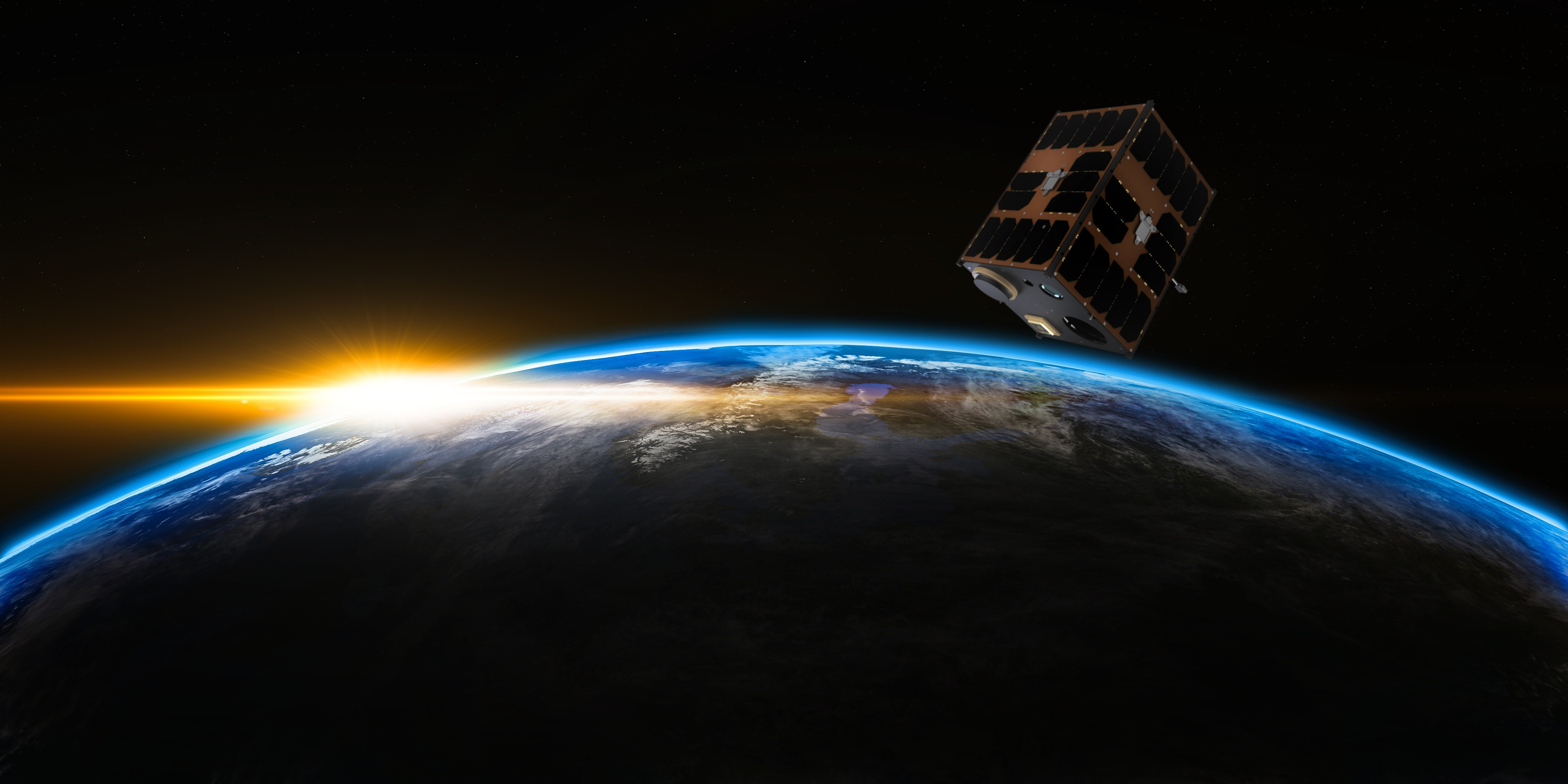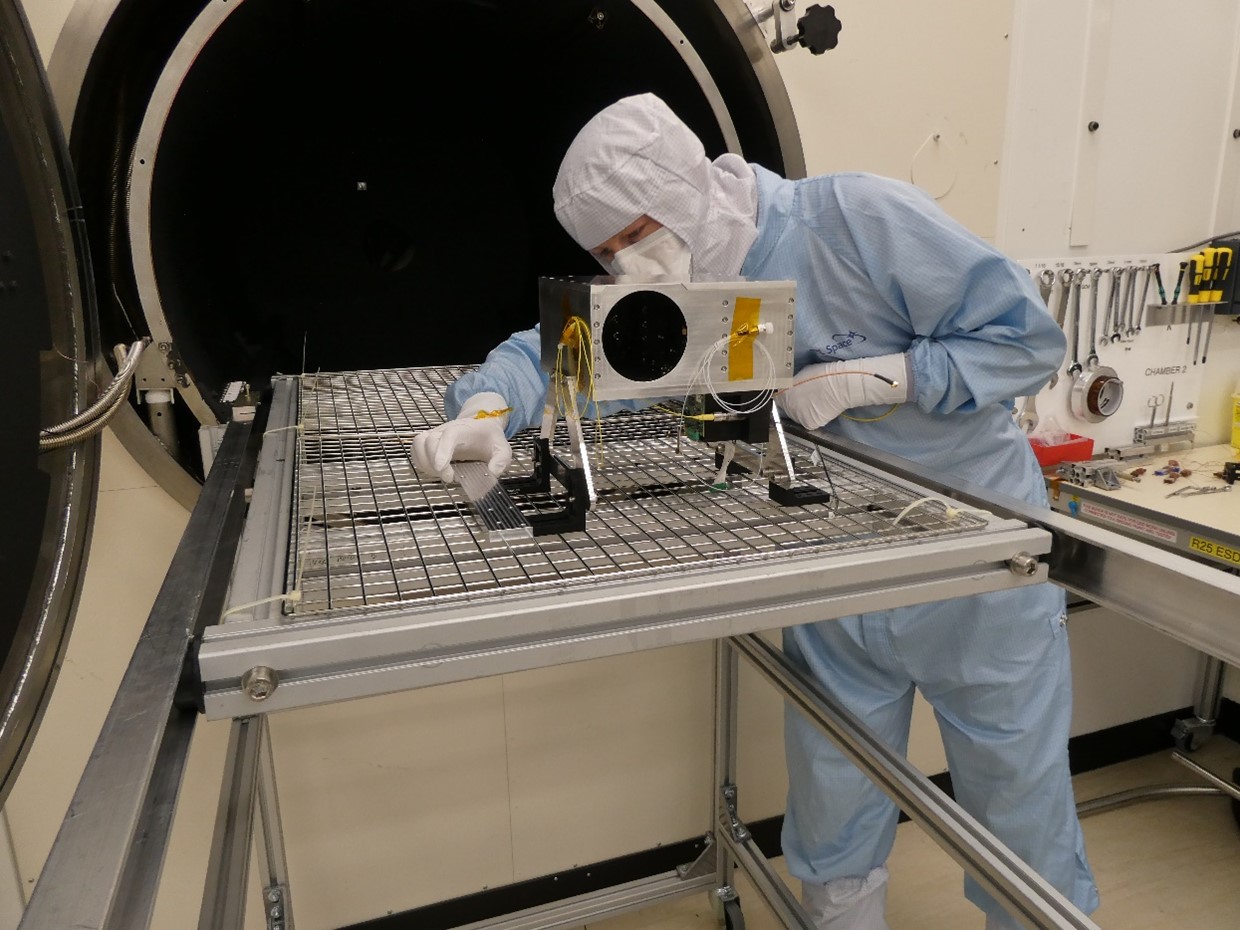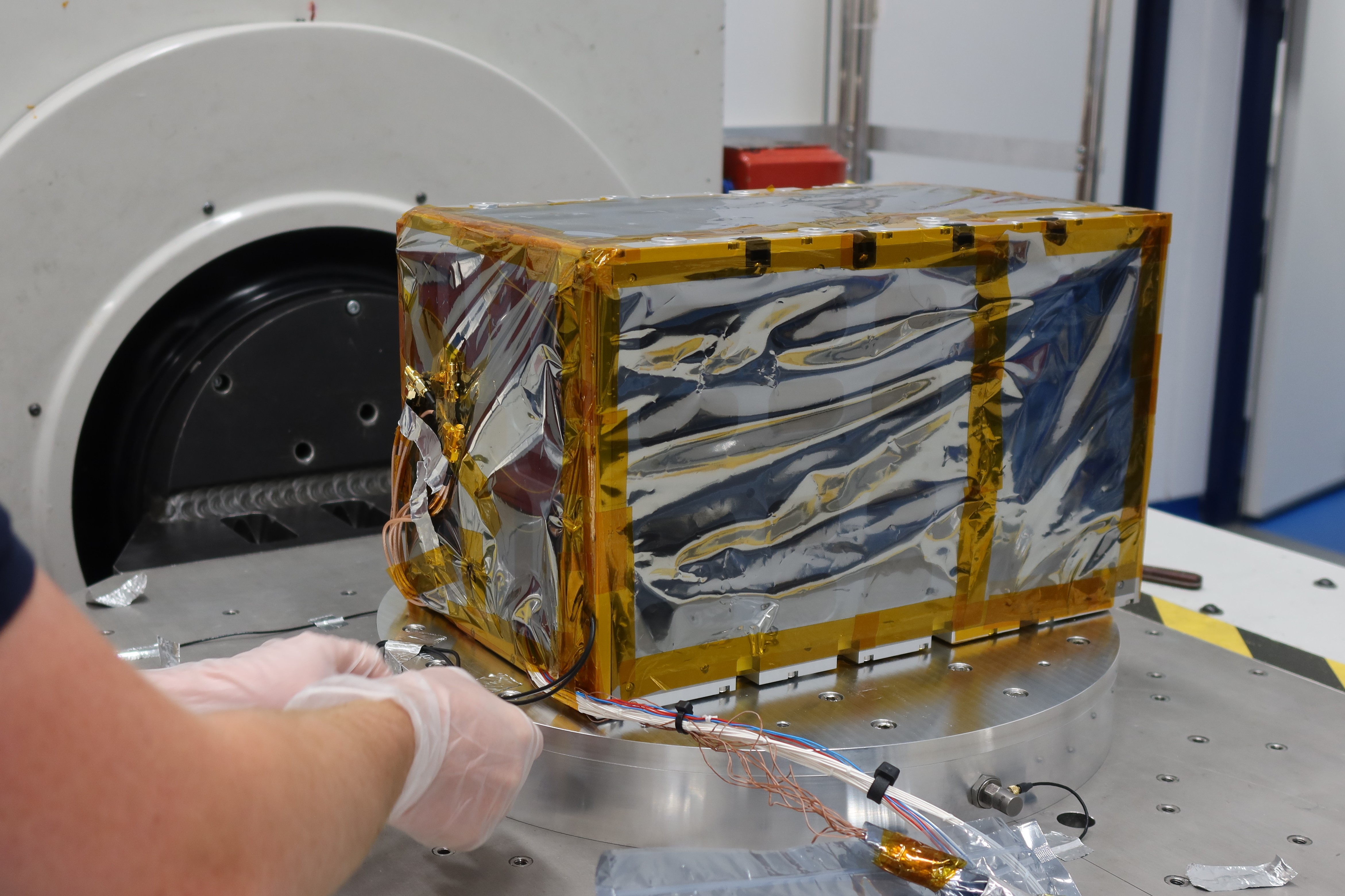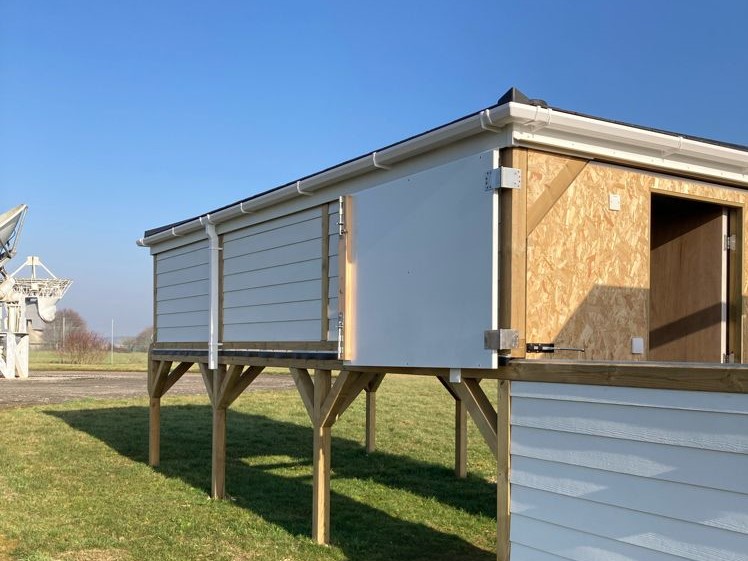But how does it work? And how could SPEQTRE, due to launch in 2024, revolutionise the future of security? Instrument development scientist Dr Hannah Robarts explains:
Quantum key distribution – QKD for short – is a form of encryption that uses properties of quantum physics to enable an ultra-secure form of communication.
In classical encryption, users share strings of random numbers, known as encryption keys, which they use to encode and decode messages before sharing them. If an eavesdropper intercepts the message, they won't be able to understand it unless they have one of these keys. However, if the eavesdropper intercepts the key itself when it's shared between users, all subsequent messages could be at risk. Classical keys are designed to be robust to cracking by classical computers, but are at risk to the increased computational power posed by quantum computers.
QKD tackles both of these problems by encoding the encryption key in the quantum properties of a string of particles. This approach makes use of a unique property of quantum systems – when the system is observed, the quantum state is changed. This means that if an eavesdropper intercepts a quantum key, the users will detect the change and discard the key. As well as this, QKD is inherently robust to the increased computational power of quantum computers. The SPEQTRE mission will aim to generate a quantum key using entangled photons, with a compact source developed by SpeQtral – a quantum communications company in Singapore.

Artist's impression of SPEQTRE in Space. Credit: ISISPACE
Multiple sectors, including healthcare, business, and government, are showing interest in quantum communication to ensure the future security of their data. However, there is one big challenge posed by generating quantum encryption keys from photons: how do you share them?
Photons are typically transmitted through free space or optical fibres, and exciting steps are currently being made with QKD over short distances. However, the current maximum distance over which optical signals are transmitted through fibres is of the order of a few hundred kilometres. When it comes to sending keys over longer distances, attention has turned to QKD from space.
The theory is that quantum keys can be generated on-board satellites and shared separately with users on opposite sides of the world. This adds plenty of extra complexity, from the challenge of generating quantum keys from a satellite, to the requirement of being able to precisely point the photons at a receiver on the ground.
The current state-of-the-art is the Chinese Micius satellite, launched in 2016, which was designed to facilitate various quantum science experiments. The platform has since been used to demonstrate the transmission of entangled photons and the generation of quantum keys. Small satellites like CubeSats may have an important role in future QKD systems as they could enable large networks of key-generating satellites. The low cost of CubeSats also allows for rapid development through quick iteration of new technology.

The SPEQTRE optical payload undergoing thermal vacuum testing at RAL Space. Credit: STFC RAL Space
RAL Space has several roles in the SPEQTRE project, including design and development of the optical payload used for maximising transmission of the quantum beam, as well as initial operations of the satellite and development of an optical ground station for receiving keys.
The satellite is now in the assembly, integration, and testing phase, with the engineering model having just been tested using RAL Space thermal vacuum and vibration facilities. The project has taken an agile approach to testing, tailored to achieving the mission requirements and establishing the effectiveness of this new technology quickly. This means explicitly accepting a higher level of risk of failure in exchange for reduced cost and time, in order to maintain the rapid development advantage of the CubeSat platform, which is being provided by Dutch company ISISPACE.

The SPEQTRE engineering model undergoing vibration testing at RAL Space. Credit: STFC RAL Space
To enable this, we've placed a high level of importance in getting in the lab early to test systems and give confidence in our approach. This has included prototyping of key components, allowing iterative improvement of the design and repeated end-to-end testing of the full optical path, including integrating the hardware of our collaborators from SpeQtral.
As the SPEQTRE engineering model moves through its testing phase, thoughts are turning to the launch scheduled for next year. If all goes to plan, the satellite will generate and transmit quantum keys to be received at the optical ground station at RAL Space's Chilbolton observatory in Hampshire, representing an exciting step forward in the path towards secure quantum communications from space.

The shelter housing SPEQTRE's Optical Ground Station at Chilbolton Observatory. Credit: STFC RAL Space
SPEQTRE will be followed by another exciting mission, SPOQC, undertaken through the UK Quantum Communications Hub, led by the University of York. This mission will aim to build on the success of SPEQTRE, extending the range of quantum secure communication possibilities, and transforming this Hub experimental technology into a commercially viable solution. Supported by UK Research and Innovation, these first UK Space QKD missions will provide novel, ground-breaking research which will create a historic UK scientific achievement.
